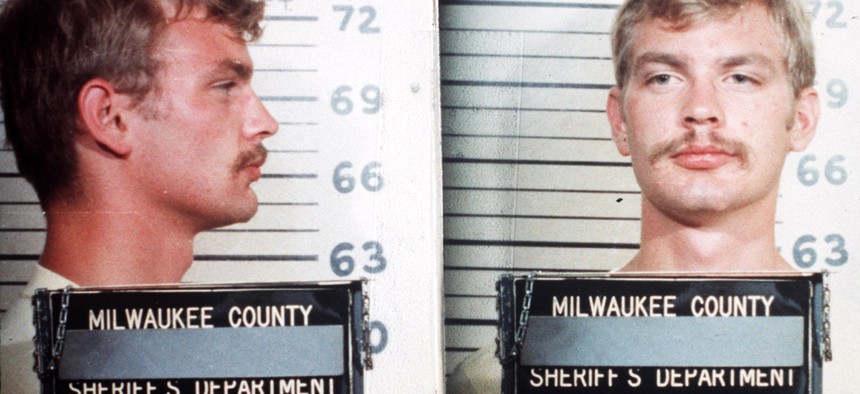The Algorithm That Catches Serial Killers

1982 Milwaukee county sheriff's department mugshot of serial killer Jeffrey Dahmer. AP File Photo
The numbers are startling.
“I wonder if we could teach a computer to spot serial killers in data,” Thomas Hargrove thought as he parsed the FBI’s annual homicide reports. The retired news reporter would soon answer his own question. He created an algorithm that, in his words, “can identify serial killings—and does.”
In The Dewey Decimal System of Death, a new film from FreeThink, Hargrove explains how “the real world is following a rather simple mathematical formula, and it’s that way with murder.”
The numbers are startling. According to Hargrove, since 1980, there have been at least 220,000 unsolved murders in the United States. Of those murders, an estimated 2,000 are the work of serial killers. Many of these cases are not ultimately reported to the Justice Department by municipal police departments; Hargrove has assiduously obtained the data himself. His Murder Accountability Project is now the largest archive of murders in America, with 27,00 more cases than appear in FBI records.
Hargrove has put the database to work with an algorithm that solves an informatics problem called “linkage blindness.” In the U.S. justice system, Hargrove explains, “the only way a murder is linked to a common offender is if the two investigators get together by the water cooler and talk about their cases and discover commonalities.” Hargrove’s algorithm is able to identify clusters of unsolved murders which are related by the method, location, and time of the murder, as well as the victim’s gender.
Most recently, Hargrove utilized his software to discover and alert the police department in Gary, Indiana of 15 unsolved strangulations in the area. “It was absolute radio silence,” he says in the film. “They would not talk about the possibility that there was a serial killer active.” After Hargrove was rebuffed, seven more women were killed. He says it was “the most frustrating experience of my professional life.”
NEXT STORY: House panel presses FAA to curtail drone dangers


